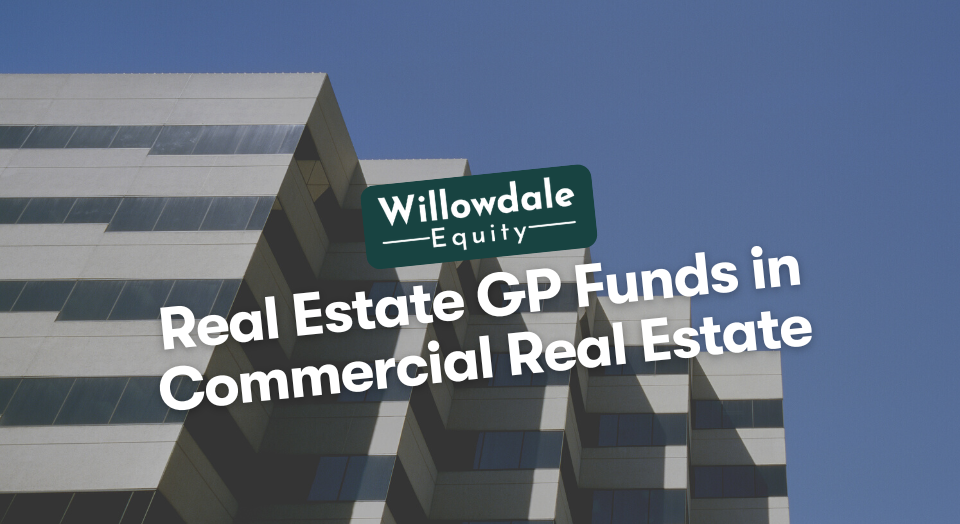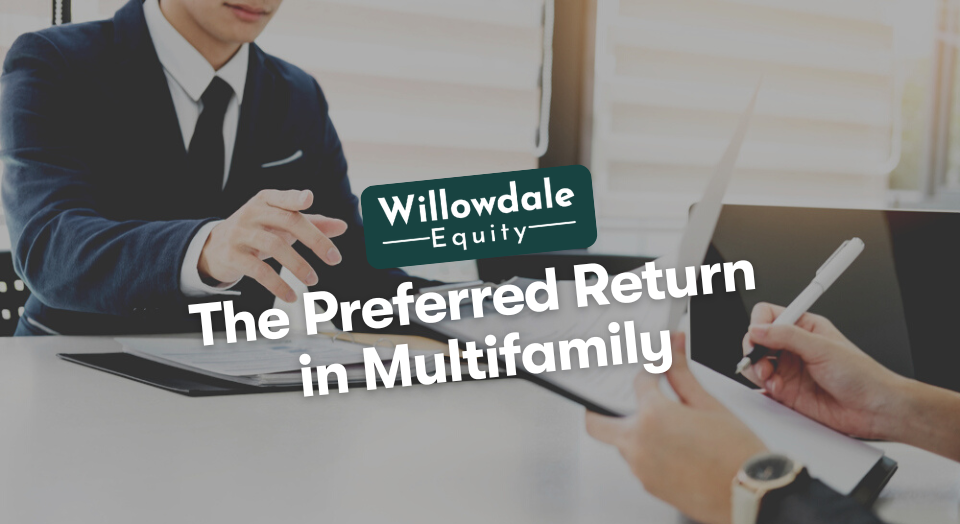
Real Estate GP Fund in Commercial Real Estate Investing
This article is part of our passive investors guide on real estate syndications, available here.
A real estate GP fund in commercial real estate investing is a joint venture that maximizes sponsors’ buying potential while providing partners passive income. The best-laid plans in real estate often involve partners. That’s why learning about general partners (GPs) and limited partners (LPs) is alternative investments 101 for anyone looking beyond the hassles and elbow grease that go along with having to invest directly and being a solitary landlord/property manager.
In this article, I’ll show you what a real estate GP fund in commercial investing means for those who desire passive income and involvement in day-to-day operations.
Key Takeaways
-
A GP fund is the investment pool used to fund the GP or sponsors minimum requirement of capital contribution, otherwise known as the minimum “skin in the game” for the GP.
-
Sponsors use GP funds to finance their “skin in the game” requirement for a given project using capital from partners under either a limited liability (LLC) or limited partnership (LP).
-
The purpose of a GP real estate fund for an investor is to benefit from the expertise of a project sponsor while making passive income.
What is GP and LP in Real Estate?
GP and LP refer to the two partner types in a limited liability partnership. A GP is the key sponsor of real estate projects. The average GP generally might identify deals, conduct underwriting, perform due diligence, oversee construction, handle day-to-day management, deal with financing, oversee cash flow, handle related documents and provide investment advice. GPs also take on liabilities associated with a real estate deal.
GPs get the equity needed from capital contributions from LPs. LPs provide funding for real estate investments in exchange for returns. The big perk for LPs is that they enjoy returns from a property while taking on a liability amount that’s capped at the amount they’ve invested.
They’re enjoying peace of mind over their investments because they’ve partnered with competent, experienced GPs capable of steering an investment property toward profits. Next, I’ll dive into the meat and potatoes of GP funds.
What's a Real Estate GP fund?
A GP fund is the investment pool used to fund the GP or sponsors minimum requirement of capital contribution, otherwise known as the minimum “skin in the game” for the GP. Sponsors use GP funds to finance their “skin in the game” requirement for a given project using capital from partners under either a limited liability (LLC) or limited partnership (LP).
The sponsor serves as the functional GP. When the investment generates profits, the GP fund distributes the profits that the GP is entitled to amongst the investors that helped capitalize the GP fund.
How does a Real Estate GP work?

The hallmark of a GP is that sponsors take on the work and liability associated with an investment deal in exchange for capital to fund their projects. Each GP agreement contains provisions dictating how the fund will be operated. The most crucial detail for investors to review is the distribution provision. This determines how a limited partner is “paid back” for their investments.
Real estate GP provisions are typically administered using a private equity fund structure. Private equity real estate means that all extra profits are divided between investors and sponsors after original investments and preferred returns are paid out. It’s not uncommon for sponsors to receive higher distribution amounts when projects reach predetermined benchmarks for a rate of return. In addition, sponsors often take a management fee.
Finally, GP funds tend to give decision-making authority to fund sponsors. Fund investors are generally “silent” passive investors. While this may seem frustrating, it’s actually “the gift” of being a limited partner. The purpose of a GP real estate fund for an investor is to benefit from the expertise of a project sponsor while making passive income. The next topic to cover is GP co-investment.
How does the GP Co-Investment in Real Estate Work?
In a GP co-investment scenario, two or more sponsors partner together to identify, develop, and manage investment opportunities for limited partners to invest in based on specific goals. A general partner’s motivation for opening up an opportunity to others is to increase capital-raising abilities to acquire larger assets.
The setup can also create preferential pricing due to having more upfront capital. In addition, general partners can use the capital raised through investors to fund property management, investor relations, and construction/renovation projects needed to help a property reach its full potential.
It’s not shocking to hear that institutional investors like pension funds and high-net-worth individuals bought 18.4% of the U.S. homes purchased in the fourth quarter of 2022. It adds up to roughly 80,000 U.S. homes worth a total of $50 billion during a span of just three months. This record-high number of investor homes sales was largely possible since investors are getting more buying power than ever before using GP fund structures.
The pros and cons of a GP structure for sponsors are coming up next.
Pros and Cons of Co-GP Structures for Sponsors
There are many perks that motivate sponsors to invite investors to start investing alongside limited partners. Of course, accepting investments comes with concessions that can be described as “cons” of the Co-GP structure.
Pros of Co-GP Structure for Sponsors:
- Ability to retain all decision-making powers.
- Better leverage.
- Access to larger, more valuable properties.
- Larger distributions in the form of sponsor fees and dividends.
- Opportunities to benefit from the expertise of other GPs.
Cons of Co-GP Structure for Sponsor:
- The bulk of the liability for an investment falls on the sponsor.
- Sponsors are responsible for all the “heavy lifting” tied to an investment. This includes identifying assets, underwriting deals, negotiating deals, negotiating asset business plans, conducting due diligence, securing financing, closing deals, managing assets, delivering returns to partners, and disposing of assets.
- General partners are partly responsible for the actions of other partners.
- Profits are split.
- Potential for disagreements.
- A GP’s personal assets may be vulnerable if a partnership is left with unpaid debt obligations.
Not every GP arrangement looks the same. Next, I’ll cover GP fund flexibility in commercial real estate investing.
What Does an Investment Look Like From the Sponsor Side in a GP Fund?
GPs can use several different approaches to building up commercial property investments. A GP operating a smaller fund might source a revenue-generating apartment complex. Next, the GP will set an entry amount for LPs looking to enter the fund. A GP looking at a more significant investment might invest in a dozen apartment complexes spread throughout a geographical region and hire a property manager.
A GP may decide to raise funds for the purchase of a specific property that has been identified as valuable. They could also choose to spend time raising capital from partners before funding multiple projects under the umbrella of a limited partnership.
While GP funds are typically intended to be long-term revenue-generating investments, it’s not uncommon for a GP investor to focus on a strategy of holding on to a fund property for five to 10 years before selling for profit. Let’s dive into frequently asked questions about GP funds.
Good Read: Can a Limited Partner Deduct Losses?
Frequently Asked Questions About Real Estate GP Funds
The LP GP split refers to how capital and distributions are split amongst partners in a particular fund or deal. The actual split is outlined in the partnership agreement document that governs the decision-making process and how the general partnership operates. The splits vary based on many factors.
In a commercial real estate syndication, the GP is the investor in charge of leading the transaction. They are sometimes called the syndicator. A GP can either refer to an individual or a small group of investors.
The Real Estate GP Fund - Conclusion
A GP fund is a joint venture that expands investing power for everyone involved. While GPs take on the brunt of the market risk and work needed to launch a project, they get access to a more significant amount of capital than they’d be able to accumulate on their own. This leads to more significant profits from high-value assets.
Join the investor club at Willowdale Equity to access our resources and exclusive value-add multifamily investment opportunities.
Sources:
Interested In Learning More About PASSIVE Real Estate Investing In Multifamily Properties?
Get Access to the FREE 5 Day PASSIVE Real Estate Investing Crash Course.
In this video crash course, you’ll learn everything you need to know from A to Z
about passive investing in multifamily real estate.
We’ll cover topics like earned income vs passive income, the tax advantages, why multifamily, inflation, how syndications work, and much much more!




